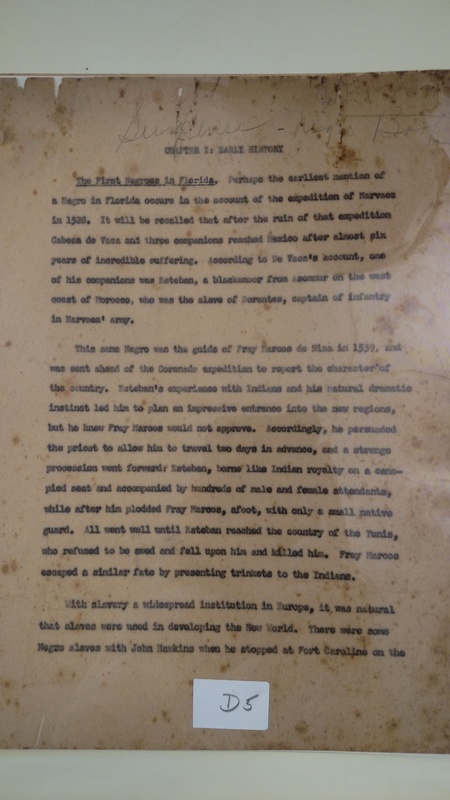Academic Historical Research: Broadening Perspectives on the History of Black Florida
In the 1930s and 1940s, efforts to cooperate to gather information on black history increased. Most of these efforts were based in universities and high schools, as the research and collection of the history of African Americans in the South took on a more academic nature. Institutions for academic writing on African American history were not nonexistent at the time. In the early 1910s, civil rights organizations and black newspapers played the earliest role in writing pieces recounting black achievements and historical figures. Publications like the NAACP's The Crisis published historical pieces to instill a greater sense of pride in their audience. The Journal of Negro History had been founded by Carter G. Woodson in 1916 as another effort. Additionally, historically black colleges and universities like FAMU were essential for continuing efforts to create academic research on African American history similar to this manuscript. These all led to the increase of academic writing by black historians in the 1940s.
As an example of such work, the Eartha M.M. White Collection contains a 72-page manuscript from 1941 that presents a chronological account of African American life in Florida. The author tracks the locations of the earliest African slaves brought to Florida by the Spanish and discusses in detail the relationships between escaped slaves and Florida's indigenous peoples. Using interviews of formerly enslaved people, they created a detailed account of plantation life for slaves in Florida after it became part of the United States. The manuscript considers black soldiers in the civil war and then discusses Reconstruction and the subsequent period of African American involvement in Florida's politics. The rest of the document is composed of short biographies of important black Floridians and a brief discussion of the situation for black people in Florida at the time of its writing. (The manuscript is presumably a draft of "The Florida Negro," prepared by the Negro Writers Unit of the Florida Federal Writers Project. For more information, see "The Florida Federal Writers Project" on the website of the Viola Muse Digital Edition.)
This piece of writing stands out from the others in this exhibit because it features an extended section on the relations between indigenous peoples and escaped African slaves in Florida. It addresses an often neglected period of interracial alliances against settlers and slaveholders, often one and the same. The manuscript discusses how African and Creek slaves escaped from the earliest Spanish settlers together. It also describes the origins of the close alliance between escaped African slaves and the Seminole in Florida. They were able to build peaceful and prosperous settlements together, with Seminole accepting the Africans into their communities. Before and during the Seminole Wars, these "Black Seminoles," as some were called, joined with their indigenous neighbors again to fight against white expansion into Florida. The narrative presented in this manuscript is one of interracial relations, cooperation, and movements of resistance. This narrative distinguishes itself from other efforts to gather historical knowledge shown in this exhibit which focus primarily on the experiences of only African Americans in the late antebellum period to the early twentieth century.

